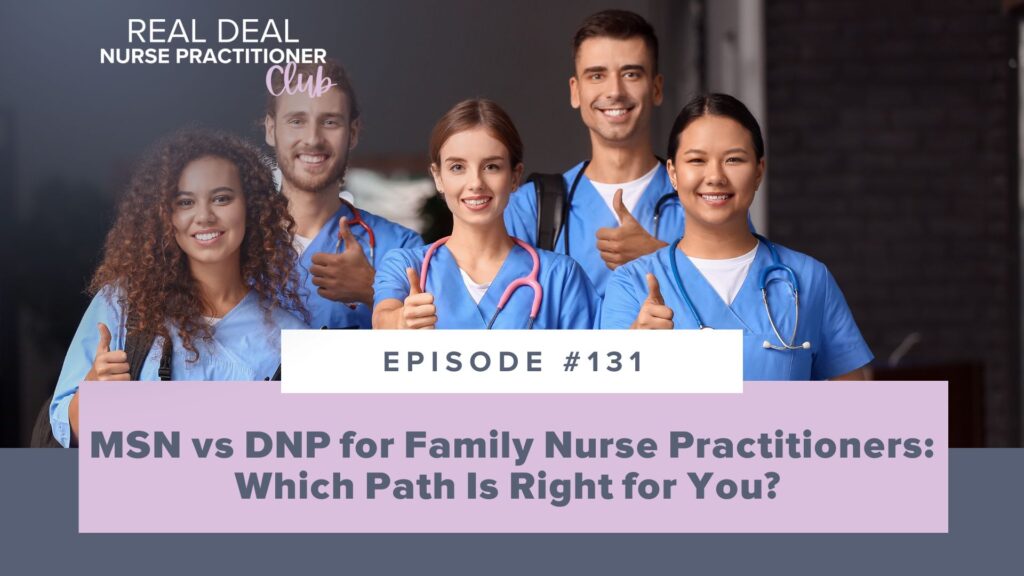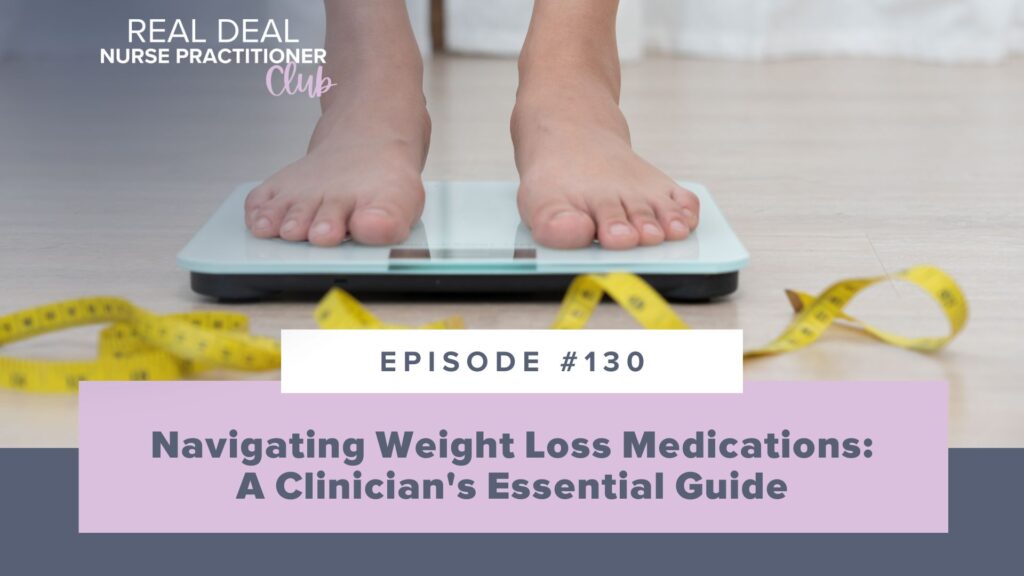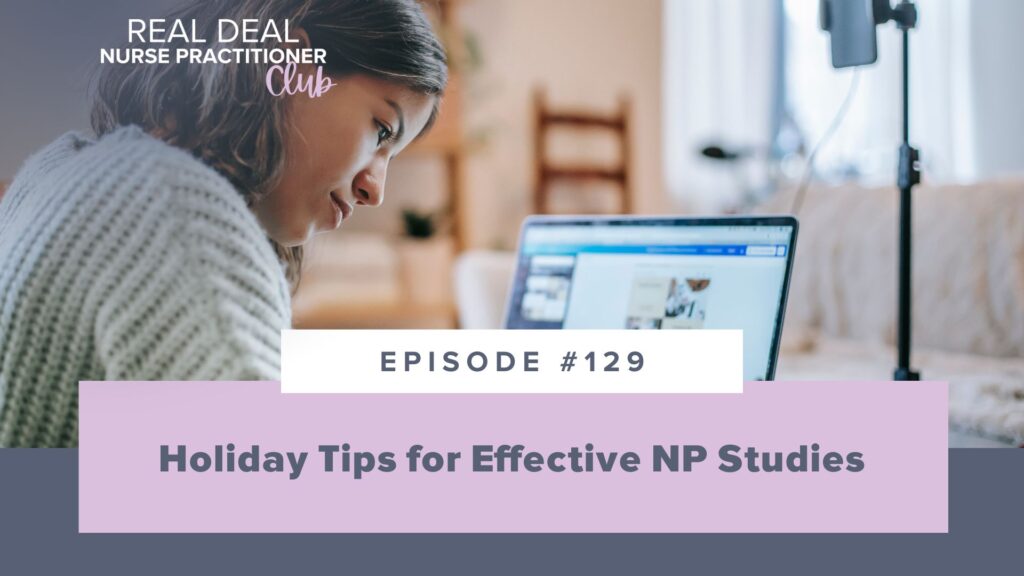Ep #93: Your Guide to Medical Billing & Coding with Anna
- by
- Aug 09, 2023
- Podcasts

I’m back this week with Anna to discuss a topic that seems to be majorly glossed over in Nurse Practitioner school, if covered at all. Medical billing and coding are two core factors that impact how you get paid as a Nurse Practitioner, which means understanding the “why” and “how” of them is vital.
While Anna and I won’t be going in-depth on every single detail when it comes to billing and coding, we are providing you with a broad behind-the-scenes look at how to properly bill and code for visits when you’re working as a new Nurse Practitioner. Failing to accurately bill and code can have serious consequences for all healthcare providers, so we hope our insights offer clear guidelines to assist you along your NP journey.
Join Anna and me in this episode as we share the basics when it comes to medical billing and coding as a Nurse Practitioner. We’re exploring what to consider regarding billing and coding, some of the codes that are frequently used, and how to use them correctly. This will provide you with the foundation and jumpstart you to enter into practice.
If you’re looking for support, no matter what phase of your nurse practitioner journey you’re currently in, I have communities available for both students and new nurse practitioners. In these communities, we work to uplift one another and grow this profession together every day, so click here to check them out!
What You Will Discover:
- The basics of billing and coding.
- Why it’s important to understand the why and how behind billing and coding.
- How to correctly use codes for billing your services.
- Why it’s worth regularly reviewing your billing practices.
- What happens if you don’t bill and code properly.
Featured on the Show:
- If you’re looking for extra support, I have communities available for both students and new nurse practitioners. Click here if you’re a student, and click here if you’re a new NP!
- Follow me on: Facebook | Instagram | YouTube | TikTok
- Centers for Medicare & Medicaid Services (CMS)
- American Medical Association (AMA)
- American Hospital Association (AHA)
- International Classification of Diseases (ICD) codes
- Evaluation and Management (E/M) coding
Full Episode Transcript:

Welcome to Becoming a Stress-Free Nurse Practitioner, a show for new NPs and students that want to pass their board exam the first time and make that transition from RN to NP as seamless as possible. I’m your host Sarah Michelle. Now, let’s dive into today’s episode.
Sarah: Hey there y’all. Today it is me and Anna here again and we’re going to be talking about a topic that seems to get glossed over a little bit in school, if it’s even covered at all. And that is the topic of billing and coding.
So I know it seems really silly that we’re not taught the ins and outs of this in school because that is how we get paid as nurse practitioners. And so while we’re not going to go crazy talking about each and every little detail of how to code visits and bill properly, my hope is that this episode will just kind of give you a behind-the-scenes look on how you could possibly properly bill and code for visits when you’re working as a new nurse practitioner.
And then, as always, I would absolutely recommend asking your supervisor, your billing department, whoever your resource is at your first nurse practitioner job to help you out as you learn the ins and outs at your new job too. And so, Anna, you kind of want to just start us off with the basics about billing and coding?
Anna: Yeah, absolutely. I will say when I first graduated nurse practitioner school, I really knew very little. Only what I had learned from my preceptors and maybe a 10-minute lecture in school. And so I actually even found a course that went over some of those basics, but absolutely talking to your supervisor or your billing department is going to be such a valuable resource.
But essentially when we see a patient, really no matter what setting you’re in, we need to bill the visit to send off to their insurance so that we can be reimbursed. And so for purposes of this podcast we’re going to focus on those with insurance because it is a whole different ball game if they’re uninsured or cash payments or anything like that.
So, many of you will be lucky and you’ll work for practices where billing is essentially done for you. That is so great. But even if that’s the case, I think it’s still really important to understand the why and the how behind billing and coding.
So first, we can talk about the codes used for billing. So as nurse practitioners you will be using codes from the Current Procedural Terminology or CPT code set. And essentially, these codes are just used to describe the services you provide to patients, so things like office visits, procedures, lab tests, anything like that.
And it is also really important to know that just like everything in healthcare, these are constantly being updated. So just stay current with the latest codes, they’re easily found online. Again, if you have that billing department, they even send out emails a lot of times when those frequently used codes are updated.
And Sarah, how do you like to go about correctly using these codes?
Sarah: Yeah, first, though, I do want to make one point about why this isn’t taught as much in school and why you tend to see it in clinical practice as you’re doing those rotations is because of those updates you were just talking about. So don’t hit on your schools too hard. So I wanted to start there.
But correctly using these codes, when billing for services it is essential to ensure that the codes that you use accurately reflect the service that you provided. So, for example, if you see a patient for an office visit and you perform a procedure, even if it’s a procedure that seems really small, you’ll need to use the appropriate codes for both the visit and the procedure itself.
So there’s going to be one code for each and this can be a little tricky when more than one procedure is done at that same visit. But that also varies depending on the specialty that you are working in. It’s also important to note too that there are different codes for new and established patients. And so be sure that you’re using the correct codes for each. So whether they’re a brand new patient or a patient that you’ve seen before and is already established.
And different practices are going to have different cutoff points for who is considered a new patient. I know some will consider a patient new if they have not been seen for three years, some others for five years. So definitely with this variance, be sure that you are reviewing your specific practice’s policies around this because it’s always going to be your best bet.
Anna: Yeah, there are definitely specific policies that your practice will have, but there are also regulations that every practice has to follow. That’s a really important aspect of coding and billing. So the Centers for Medicare and Medicaid Services or CMS set guidelines for both billing and coding. And it’s crucial to follow these guidelines so that we can avoid any errors or even potential fraud.
And so we just want to stay compliant. We want to have a good understanding of the regulations and just keep up to date with those changes like we’ve talked about. Really, it’s a good idea to regularly review your billing practices and just ensure they align with whatever regulations are out there.
And again, when you start that first job if you have a whole billing department, they will keep everything up to date. But I always recommend that you still have that background information because it’s really good to know.
Sarah: Yeah, and there’s this extra layer too, of billing and coding because we have the guidelines that are set by the Centers for Medicare and Medicaid Services also known as CMS, but there are also a few other organizations that provide guidelines for coding and billing.
So I’m thinking of organizations like the AMA, or the American Medical Association, and they publish the CPT code set. Or the AHA, the American Hospital Association, because they publish the International Classification of Diseases or the ICD code set.
And so really, depending on what specialty or setting that you are working in, you may be required to stay up to date on a variety of different guidelines. So I just want to give you that foresight as well before you get into practice or if you’re entering into practice right now.
And a key piece of medical coding and billing is the use of something that we like to call modifier codes. So modifier codes are used to indicate that a service was provided in a special way or that certain circumstances were present that affected that service.
So an example of this, a modifier code may be used to indicate that a service was provided in a rural area or that a patient was seen in a hospital setting versus a typical office setting. These, again, vary a little bit by setting and practice. But keep those in mind too if you work in a rural health clinic especially, a hospital, home health settings, you might have some modifier codes that you need to be aware of that you can use regularly.
Anna: Yeah. And, Sarah, you just before that mentioned that International Classification of Diseases or that ICD code set. I want to talk about that for another minute too because a really important guideline is the use of those diagnoses or ICD codes. And those are necessary to indicate the reason for the encounter or the diagnosis of the patient.
So these codes are used to provide essentially just a uniform way of describing diseases and other health conditions. And they’re used for billing, but they’re also used for tracking and even research purposes.
Again, these update regularly. I think they are most recently on the 10th rendition, so they’re the ICD 10 codes, although you may sometimes still see or hear of an ICD nine code from the ninth rendition. And these are really just what I like to think about as reasons for the visit. So is it strep throat or hypertension or what have you? They also have some really unique ICD 10 codes out there as well.
But those are all their own ICD 10 code and they should all be put in appropriately. And a different ICD 10 should be used for all diagnoses or all reasons for the visit. So a lot of times you will have multiple and, really, this just helps insurance companies to see what went on at the visit and reimburse you and the practice properly.
Sarah: Yeah, and in the spirit of reimbursing properly and making sure that you are getting paid appropriately, when you are coding for an office visit, you know we have just talked about accurately reflecting the type of visit, but we’ve also got to consider the level of complexity as well.
So we said earlier there are different codes for new versus established patients because we know typically it’s going to be a little bit quicker with an established patient, it’s going to be a little bit longer for a new patient. And alongside that are codes that reflect that level of complexity of the visit.
So, for example, the code 99213 is used to describe just a typical office visit for an established patient, while the code 99204 is used to describe a comprehensive office visit for a new patient. Also important to note here that there are several different codes for different types of visits, such as telemedicine, prolonged services, home visits, and it’s essential to include those additional codes to fully describe the services that you are providing.
So this can include codes for procedures performed, diagnostic tests that you ordered, medications that were prescribed. And so some examples here, like we talked about, complexity of care coding is a way to reflect the level of complexity of a medical service in the billing process.
And that can include the complexity of their condition, the complexity of the treatment or the procedure, and the complexity of the decision making process, because that’s a factor too. How far do you have to go with this patient to create a plan that makes sense? You want to account for that as well.
Anna: Yeah, exactly. And these CPT codes that are used for billing that include levels of complexity for office visits, they’re really represented by what’s called the E&M codes or evaluation and management. So, these codes are divided into three levels. I’m just going to make it a little bit simpler for you here because I know it can get a little bit confusing.
But starting off with level one, these are represented by codes anywhere between 99201 and 99205. So these lower number ones, think of the simplest office visits. Level two, we go up a little bit, so 99211 or 99215. Now, these are used for those intermediate complexity office visits. And level three, represented by the codes 99221 to 99225, these are typically used for the most complex office visits.
And so really, we’re just going to look at the nature of the encounter, what decision making you had to do and, ultimately, the time you spent with the patient as well. The more complex, the higher level of the code. So let’s say a patient has a complex medical history and multiple chronic conditions that we are managing. That condition is a little more complex and will require a higher level code than someone just coming in with a concern of strep throat, right?
And we want to make sure our documentation for the encounter reflects this. So make sure your documentation includes things like the symptoms, the diagnosis, the treatment, all the medications you prescribed as well as that decision making process and that time spent with the patient. These are all things that insurance looks at.
And again, you don’t have to have all of this memorized right after this episode. You are going to be heavily using your resources when you go into practice, especially when you’re brand new. So definitely lean on other clinicians in the practice, lean on finance or that billing department.
Sarah: And I don’t want to get too scary, but I think something that we would be sorely remiss if we didn’t talk about in this episode, is what happens if we don’t code and bill properly. So I don’t want to be a big scary, but not billing properly can have serious consequences for all healthcare providers, including financial penalties, legal action, and damage to reputation.
And one of the most significant consequences of not billing correctly is financial penalties. So this could include fines, any reimbursement reductions, and even exclusion from government programs such as being able to bill Medicare and Medicaid. And they can ban you for life. So it’s definitely not something that you want to get in trouble with because it can bar you from being able to bill certain services again.
Additionally, if a healthcare provider is found to have intentionally submitted false claims, they can be held liable under that False Claims Act, which carries heavy fines and penalties.
Anna: Yeah, and I do want to make that note, there is a big difference between you are first learning, you are asking questions, maybe another provider in the office or the billing department catches a little mistake that you made and we get that fixed and you learn, versus intentionally submitting false claims. And I don’t think any of you are going to do that, but, right, you did mention that legal action. You can see lawsuits brought by patients, even by insurance companies or government agencies.
And so we really, really just want to make sure that we are doing the best we can, right? Not billing correctly not only can damage your reputation, but it can also include negative press, loss of patients to your practice, and ultimately damage to the provider’s relationships with other healthcare providers. And errors just bring a lot of negative associations with you or your practice and we really don’t want that, right?
And so this can happen when a health care provider is denied reimbursement for services they provided. In some instances you or your practice will have to pay back everything you billed for and that can really add up. And in some cases, unfortunately, end in termination of a practice as a whole.
So again, I don’t want this to be a big scary, definitely lean on your resources. But it’s also not something to mess about with or be really casual about because there are so many consequences. And one we didn’t mention yet, it’s a smaller aspect of not billing correctly, but it can also have a negative impact on healthcare research and data analysis, right? Because we’re using those codes to track and study diseases and treatments.
Sarah: So along with the big scaries, I just want to pause and say this is a great time to refresh on the fact that we want to maintain accurate and complete documentation of all the services that we are providing to patients. So keeping detailed notes of the services we provide, any relevant patient information, diagnosis, treatment, medications. And this documentation will be used to support the codes that you use when billing for services and is essential, too, for compliance and regulations, of course.
But I know this is not the most fun episode that we have ever done, but hopefully this gives you the very basics of billing and coding, what to be thinking about, what to look out for, some codes that are frequently used. And this will at least give you the foundation and jumpstart that you need to enter into practice and begin to bill and code appropriately.
But like we’ve said 17 times in this episode, lean on your billing department, lean on your resources, and make sure that you have everything you need to try to do the very best job that you can. And we will be back in two weeks with another episode. So we’ll talk to y’all soon.
As an extra bonus, friends, if you’re looking for support no matter what phase of your nurse practitioner journey you’re currently in, I have communities available for both students and new nurse practitioners. In these communities, we work to uplift one another and grow this profession together every single day. Links to join will be included for you in the show notes.
Thanks for listening to Becoming a Stress-Free Nurse Practitioner. If you want more information about the different types of support we offer to students and new NPs, visit https://www.npreviews.com/resources. See you next week.
Enjoy the Show?
- Don’t miss an episode: follow the podcast on Spotify, Apple Podcasts, Google Podcasts, or RSS.
- Leave a review in Apple Podcasts.
Search the Blog
Join our Facebook Group!
Get FREE support and encouragement from thousands of FNP/AGPCNP students and our NP Support team.
Learn More3 Study Hacks to Conquer Your NP Exam!
Download these tips that have helped thousands of students pass their NP board exams.
Download NowInstitutional Partnerships
Are you a faculty member and would like to bring Sarah Michelle’s resources to your school? Email us at nursinggroups@blueprintprep.com for special institutional pricing or click on the link below to learn more.
Learn MoreGroup Discounts
Are you a student and have 10 or more classmates interested in purchasing Sarah Michelle’s courses? Email us at nursinggroups@blueprintprep.com for special pricing.



